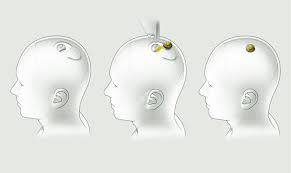The big promise of Elon Musk’s ‘neuralink’ with extended reality
Jaspreet Bindra
Last week, a “healthy, happy pig” named Gertrude attained her 15-seconds of fame. This was courtesy Elon Musk, the serial entrepreneur and now the third richest man in the world, demonstrating his latest venture, Neuralink, a ultra-high bandwidth brain-machine interface (BMI) to connect humans and computers. As this column has often gushed about Musk, he thinks new and big, and Neuralink did live up to its billing, certainly from a PR viewpoint. The reactions to it from the scientific community were mixed, and we will discuss this in a forthcoming column.
But what Neuralink did was to fire a few of my memory neurons and take me back to a programme I attended in Singularity University. In a session by a professor there, Jody Medich, I saw a quote by Satya Nadella: “The future of computing will be driven by Quantum, AI and XR”. While I understood why he talked about AI (Artificial Intelligence) and Quantum Computing, it was his talking about XR in the same breath, that threw me. XR or Extended Reality includes technologies like AR (Augmented Reality), VR (Virtual Reality) and MR (Mixed Reality). I had always considered XR to be an afterthought to blockbusters like AI, Blockchain, IoT, etc. But Nadella was thinking otherwise! I learnt that XR was not just a tool to make Pokémon Go, or to show you a car in different colours, but it was something which could make paralyzed war veterans walk, or make the blind ‘see’ , much like what BMI was promising
XR is big in enterprise, with Statista and IDC estimating the market to be worth US$209bn by 2022, powered by a shipment of 66mn AR/VR headsets. Applications include training in unsafe areas, retail with virtual properties, clothing and shoes, entertainment with virtual music festivals and concerts, and travel where you can see giraffes in a safari without going to Kenya ( a tech solution in COVID-times). XR has great potential in healthcare – for instance, projecting the veins in your arm so that IV placements become more accurate. Solar installations use XR with overlays and heads up displays, increasing efficiency and safety.
While these are great, what makes this technology a superpower is the ‘merging of the digital, physical and biological’. Consider the cerebral cortex of our brain, specifically the neocortex, which is concerned with sight and hearing. XR explicitly works on one part of this, the primary visual cortex, the area which enables us to see. A large part of the brain is devoted to sight, and it is here where XR can impact and work its magic. It can amplify our vision and literally rewire our brain.
One application of this XR-rewiring is pain reduction. The Israeli firm VRHealth works on using VR to cure migraine pains, for instance. “Our brain is like a CPU – 75% of that CPU goes to visuals and sound,” says founder Eran Orr. “When we overload our CPU with an immersive technology like VR, things like pain can get downgraded in the priority list. That is why it’s amazing for pain management or pain distraction. Once you combine that with actual rehab, it’s a game-changer.” The New York Times has written of Hollie Davis, who owes her current full mobility to trying VR as part of her treatment for persistent, life-inhibiting pain following a motorcycle accident. She “spent 10 or 20 minutes in a dark room while a head-mounted 3-D screen transported her to a very relaxing place, taught her about the nature of pain, how oxygen travels through the body, then how to breathe, focus on her breathing, relax her body and think of nothing else.” The device engages multiple senses, essentially flooding the brain with so much input that it cannot register pain signals. When pain messages try to get through, “the brain gives a busy signal”.
VR can help restored feelings in paraplegics. Recently, researchers worked on eight “chronic paraplegics.”, where the participants underwent a year-long training using BMIs combined with virtual reality tech. Half of these patients were upgraded from a chronic to an ‘incomplete paraplegia classification’. One of them, who had suffered from paralysis for 13 years, was able to move her legs without the help of a support harness!
As Medich puts it, XR can be used to provide ‘cognitive ergonomics’. While physical ergonomics amplifies manpower, cognitive ergonomics amplifies brain power. XR, combined with Neuralink like technologies, therefore, will be super powerful; they can help the disabled to walk again, and the pain-ridden to transcend pain! I am already thinking how cool Gertrude will look wearing a VR headset…
(This article appeared as an OpEd in Mint on September 3 2020)


